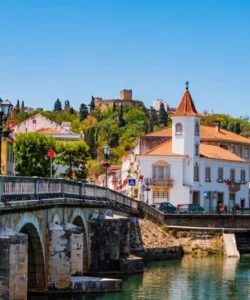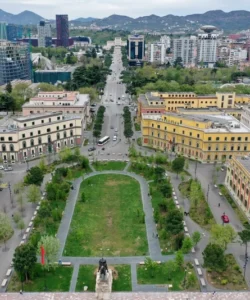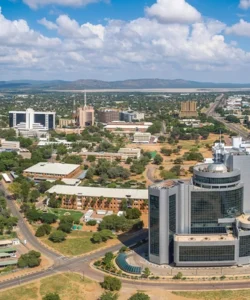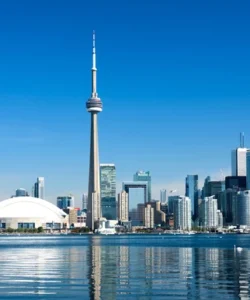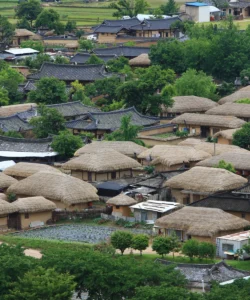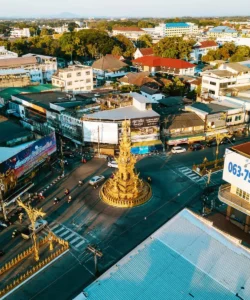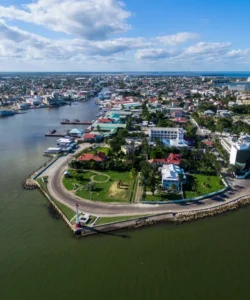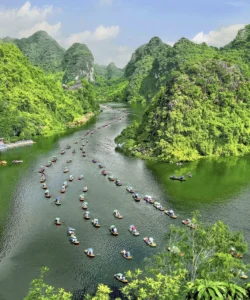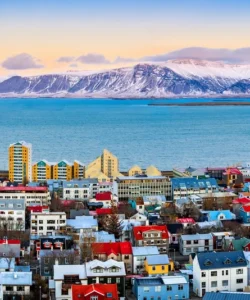Namibia, located in southwestern Africa, is a vast country known for its dramatic landscapes, from the towering red sand dunes of the Namib Desert to the wildlife-rich plains of Etosha National Park.
![]()
Area & Population:
Namibia’s total area is approximately 824,292 square kilometers, making it one of the least densely populated countries in the world. Its population is around 3.02 million people.
Language:
The official language of Namibia is English. However, a wide variety of indigenous languages are spoken, including Oshiwambo (the most common), Herero, and Nama. Afrikaans is also widely understood and spoken.
Currency:
The currency of Namibia is the Namibian Dollar (NAD), which is pegged to the South African Rand (ZAR) on a 1:1 basis. The South African Rand is also legal tender in Namibia.
Religion:
Christianity is the dominant religion in Namibia, with over 90% of the population identifying as Christian. The largest denominations are Lutheran, Roman Catholic, and Anglican. A small number of people adhere to indigenous religious beliefs, particularly among the Himba, Herero, and San groups.
Capital & Major Cities:
- Capital: Windhoek is the capital and largest city. It’s a clean and modern city with a blend of German colonial and contemporary architecture.
- Major Cities: Other important cities include:
- Walvis Bay: A major port city on the coast with a large lagoon famous for its birdlife, including flamingos.
- Swakopmund: A popular coastal resort town with a strong German colonial influence in its architecture and culture. It’s a hub for adventure sports.
- Rundu: The second most populous city, located in the north near the border with Angola.
- Oshakati: A major urban center in the northern part of the country.
- Lüderitz: A coastal town in the south known for its German colonial architecture and the nearby ghost town of Kolmanskop.
Attractions & Wonders:
Namibia is a top destination for nature lovers and adventurers.
- Natural Wonders:
- Sossusvlei & Deadvlei: Located in the Namib-Naukluft National Park, this is an iconic landscape of towering red sand dunes surrounding a white, cracked clay pan with ancient, fossilized trees.
- Etosha National Park: One of Africa’s great game reserves, known for its vast salt pan and a high concentration of wildlife, especially around its unique waterholes.
- Fish River Canyon: The largest canyon in Africa and one of the largest in the world, offering spectacular hiking opportunities and panoramic views.
- Skeleton Coast: A desolate stretch of coastline famous for its shipwrecks, fog, and large seal colonies.
- Damaraland: A rugged, beautiful region of mountains, plains, and unique desert-adapted wildlife like elephants and rhinos.
- Cultural & Historical Sites:
- Kolmanskop: A famous ghost town near Lüderitz, once a thriving diamond mining settlement, now being reclaimed by the desert sands.
- Twyfelfontein: A UNESCO World Heritage site with one of the largest concentrations of rock engravings and paintings in Africa, created by ancient Bushmen.
- Cape Cross Seal Reserve: Home to one of the largest breeding colonies of Cape fur seals in the world.
Architecture:
Namibian architecture is a mix of traditional and modern, heavily influenced by its German colonial past. This is most evident in cities like Swakopmund and Lüderitz, where you can find German-style buildings, complete with gables and half-timbered facades. Traditional and vernacular architecture is also present, especially in rural areas.
Roads:
Namibia has a well-maintained road network, especially the major highways. However, many of the most scenic routes and roads in national parks are gravel or sand, requiring a 4×4 vehicle. Self-driving is a popular way to explore the country.
Hotels:
Namibia offers a wide range of accommodation options, from luxury lodges and tented camps in private reserves to guesthouses and hotels in cities. There are also many campsites and self-catering options, catering to different budgets and travel styles.
Restaurants & Cuisine:
Namibian cuisine has a strong German and South African influence, but also features traditional dishes and wild game.
- Key Dishes:
- Braaivleis (barbecue): A social and culinary tradition, often featuring a variety of grilled meats like beef, lamb, and game (oryx, kudu).
- Biltong: A popular snack of air-dried, cured meat.
- Potjiekos: A hearty stew slow-cooked in a cast-iron pot over an open fire.
- Oysters: Especially famous in the coastal town of Walvis Bay, known for their size and flavor.
- Unique Foods: You can also find more unique local dishes like Mopane worms in some regions and even Bullfrog in the north, though caution is advised as it can be poisonous if not prepared correctly.


